Reduce Portfolio Risk And Grow Your Portfolio
The Investment Perspective – March 2023

“Neither the investing method nor the fundamentals of the business are right or wrong because the mood of the market is favourable or unfavourable toward the “stock”. That is because when you really think about it, “stocks” (shares) are all about the financials and the trading price, the share price… the cash up value. What matters more is the economics of the business”
Peter Flannery
Key Points:
- If you want to minimise risk and make your portfolio grow, invest in productive assets that grow.
- Invest in the business, not the stock.
- Quality earnings (profit) are key.
- Also invest in businesses that retain most if not all of their earnings.
- That way, short term market and economic conditions have less say about your investment success long term.
Quality Business Indicators
We invest in the business, not the stock.
The reason we invest in the business rather than the stock is that the stock doesn’t give us the full story. It can be speculative. That means it doesn’t offer a way of investing that gives us as investors the reliability that we require.
Sure, it’s great to speculate on Amazon, Tesla, Xero and other well-known stocks and look like they make lots of money all day long. What could be simpler?
For those that have the skill to speculate and win every time, then why stop doing it?
For the rest of us, a more certain and reliable approach might be better for us long-term.
Two quality business indicators
The first one we’ll look at is free cash flow.
Ideally, a business generating free cash flow is a business that we would generally like to investigate further. It’s important though that the level of free cash flow is greater than profit. It’s all about how well the business converts profit to free cash flow.
The next indicator is the dividend payout ratio.
Many investors, fund managers, share brokers and advisers still see stocks that pay out a high dividend rate as an indicator of a quality business. In short, dividend payouts are an unreliable measure because companies can pay out more than they earn, and do so surprisingly often. A bit like spending more than you earn. Unsustainable.
A business that retains its profits, redeploys it into the business effectively will likely grow and compound investors’ capital long-term. It’s not guaranteed. It is, though, more likely.
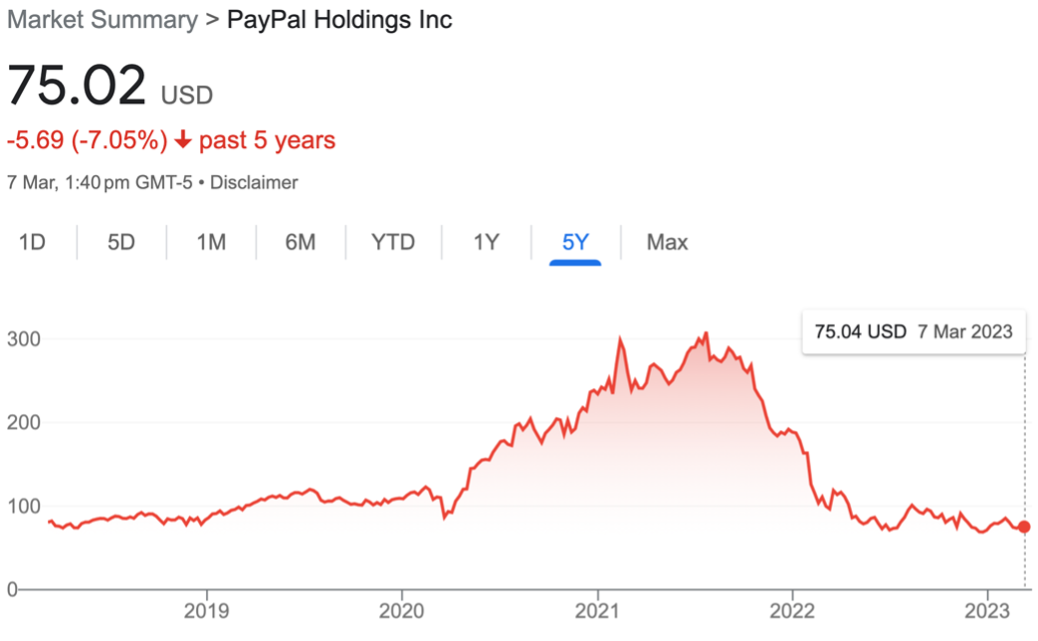
The above graph tracks the trading price of Paypal over 5 years.
Looking at the graph above you can see the trading price of Paypal is behind where it was even 5 years ago.
It is about quality earnings
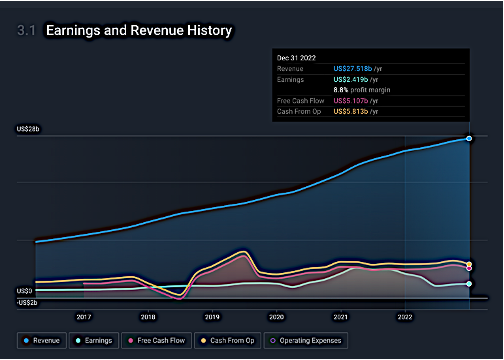
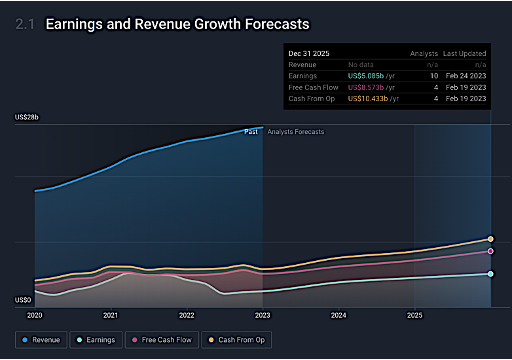
The graph to the left shows Paypals revenue, earnings and free cash flow over the last 5 years or so. The graph to the right shows future projections.
So, let’s look closely at those two graphs above. Firstly, looking at the graph to the left, look specifically for the free cash flow line. You’ll note how generally it tracks above earnings. This is an indicator that shows Paypal converts profit to free cash flow reasonably consistently and effectively.
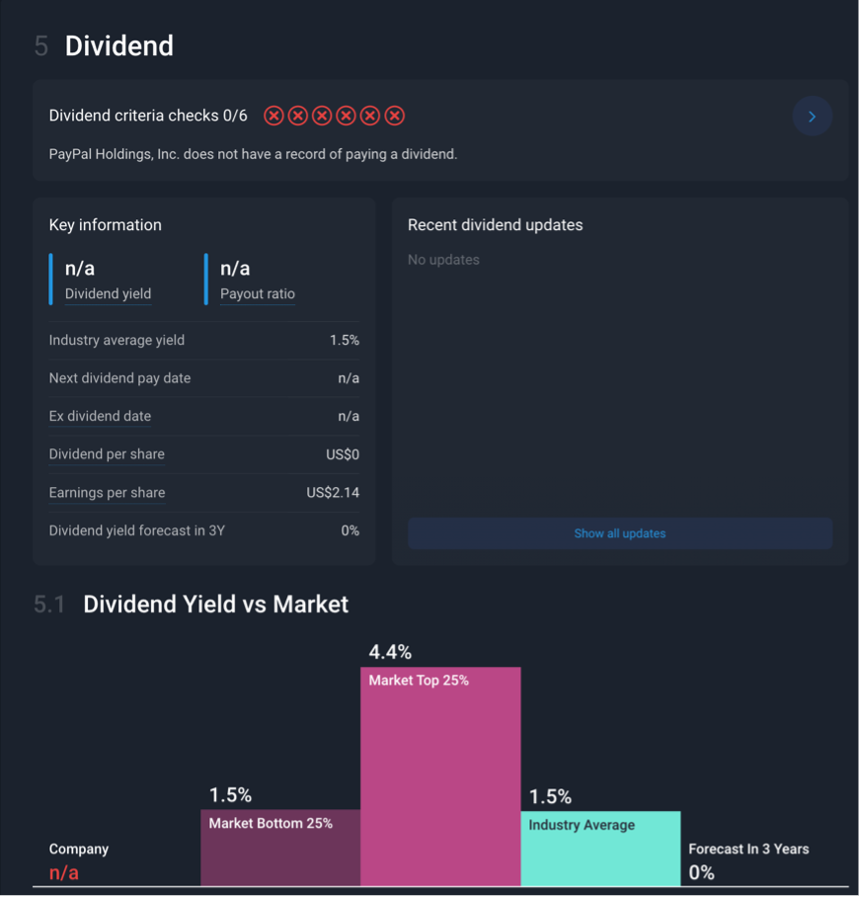
The above graph shows Paypal’s dividend payout compared to the market.
Looking at the dividend graph immediately above, we can see under ‘key information’ (near the top) the n/a above dividend yield and above payout ratio.
Down below, the bar graph shows n/a once again. This tells us that Paypal does not pay a dividend. In other words, its dividend payout ratio is $0.00 and 0%.
That’s the way we like it because that means they can retain that cash and redeploy it into the business for growth.
So how come though the share price of Paypal went up and then came back down again?
The market became overly enthusiastic about Paypal’s prospects of future growth because of online activity that seemed to increase as a result of the Coronavirus pandemic.
As that moved on and market conditions changed, the market took the view that the business was no longer useful and bailed out. The market looks for growth today, tomorrow and the day after and every day after that.
For those investing in Paypal the stock (that is most people) the indicators they look for ( e.g. the share price, earnings) turned negative and so they sold.
For us investing in the business, we are seeing general market conditions impact in the short-term however the business remains quality regardless.
We know this because, apart from the fact that it converts free cash flow efficiently reasonably consistently, it remains by far the largest online payments provider globally and has a strong competitive advantage.
As a point of interest, if you look at the two graphs side-by-side above, you’ll see the blue line which shows revenue. As you can see it continues to move in an upward direction. That means the business continues to grow.
Ryman Healthcare
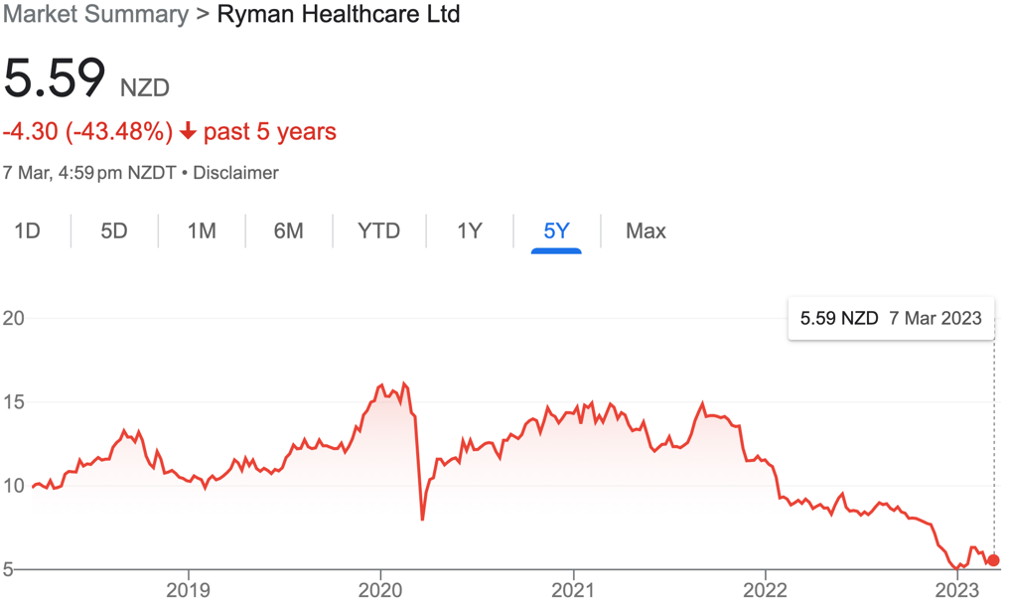
The above graph tracks the trading price of Ryman Healthcare over the last 5 years.
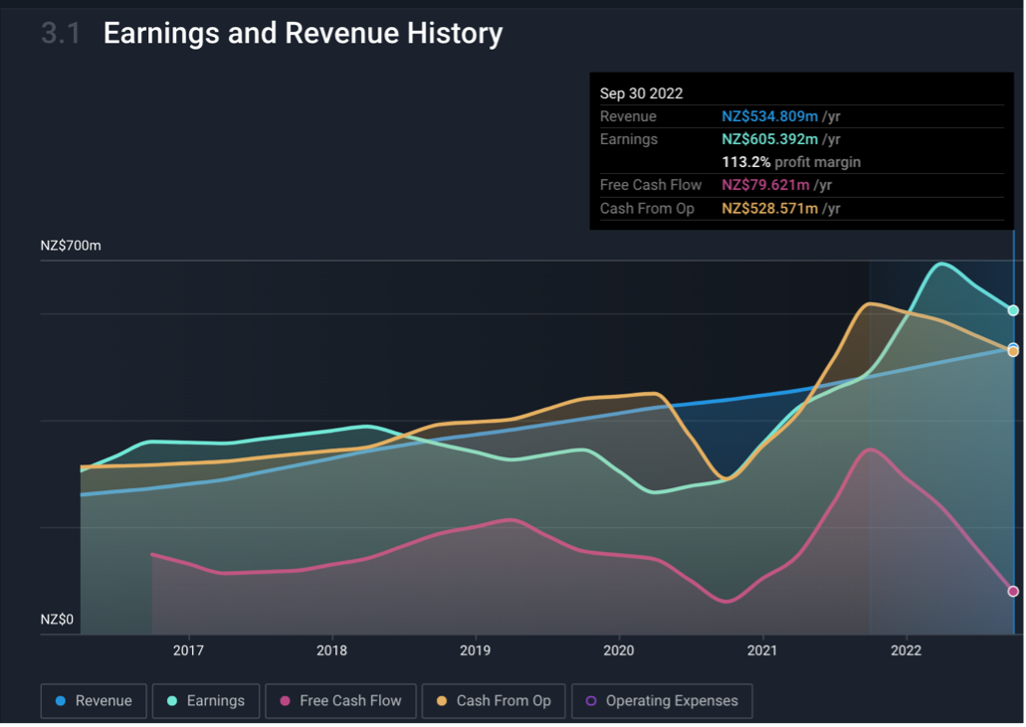
The above graph tracks Ryman Healthcare’s revenue (turnover), earnings (profit), free cash flow and cash from operations.
We can see from the graph above, looking at the free cash flow line that Ryman Healthcare are inefficient at converting profit to free cash flow which indicates poor quality earnings.
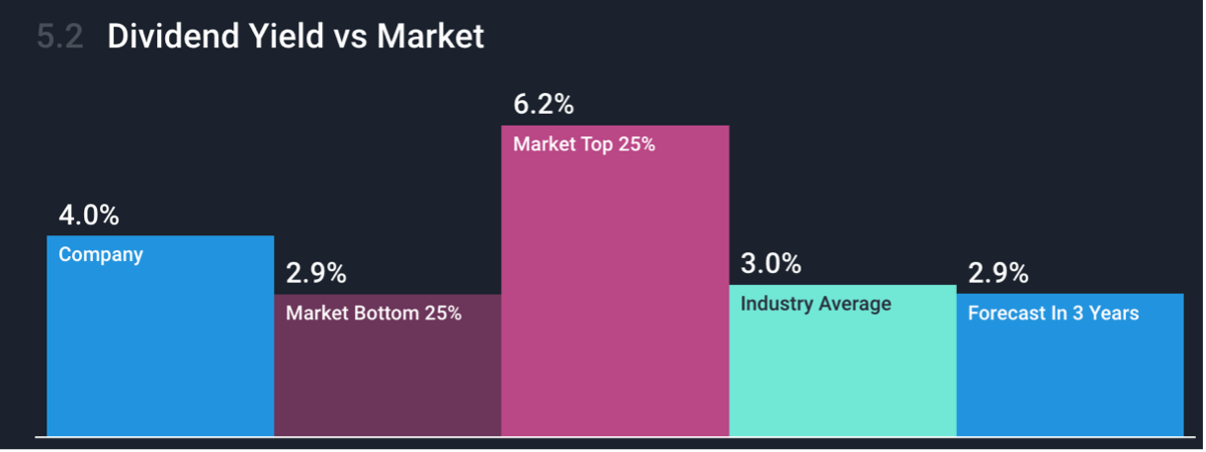
The above bar graph compares Ryman Healthcare’s dividend payout with the market.
Ryman Healthcare has been paying dividends to shareholders which is questionable when we think about the fact that they’ve just undertaken a capital raising (shareholders putting money back into the business).
It gets worse though, take a look at the image below…
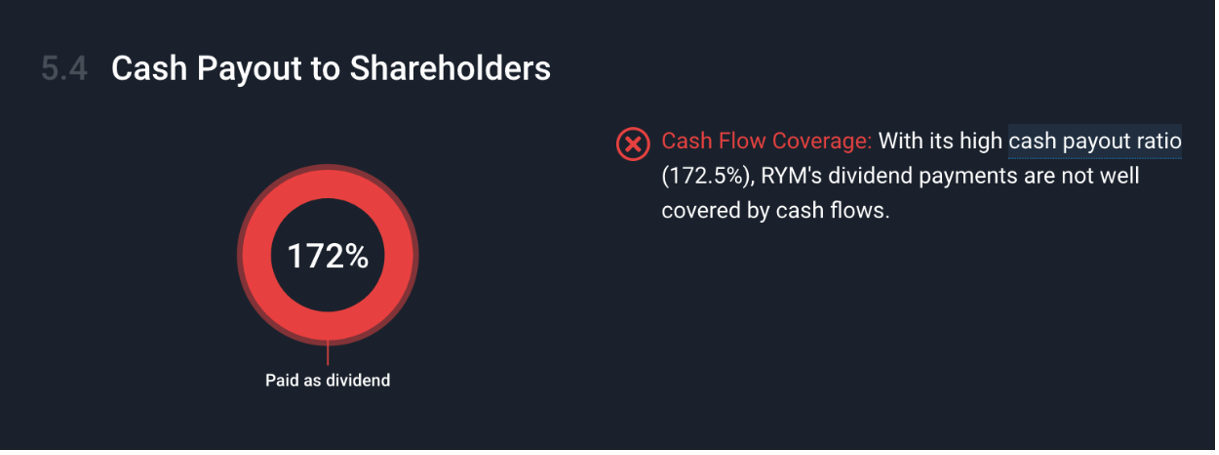
The above image shows the cash payout to shareholders compared to the cash available to pay out those dividends.
As you can see from the graph above, the dividends paid out to shareholders were 172% of the cash flow available. Paying out unaffordable dividends is silly.
Worse though, paying out dividends that are unaffordable let alone paying out dividends at all is highly questionable when the company found itself having to raise capital to tidy up the balance sheet. In other words, they are paying out dividends to shareholders as well as going after growth that was difficult to achieve with the resources they had.
It might have been useful if they had stopped paying out dividends, retained that money and allocated it to the growth that they were wanting to achieve.
The problem of course is that many shareholders are in there partly for the dividend and partly for the growth story. There are many examples of companies that have reduced the dividend payout ratio and seen their share price plummet as a result.
Not good when you’re talking to your bankers about key performance indicators and loan servicing arrangements. Not a good story either for the average punter who just wants to see the trading price rise and or receive that dividend all the time…
Regardless, Ryman Healthcare can still be considered a sound business from a solvency perspective. We could not say that they are in financial difficulties although as an investor, it seems prudent to question what management was thinking paying out dividends when they couldn’t afford them and then undertaking a capital raising.
In simple language, they paid out dividends to shareholders and then turned around and asked them to give that money back by way of the entitlement offer. Why not just keep the dividends and go after growth sensibly?
The business or the stock?
Retail investors mostly play the share market, investing in the stock.
It is interesting to watch too how a number of analysts modify their analysis to line up with what’s going on with the trading price.
It’s almost as though the market mood is their methodology for analysing a stock (!?). We see this when the so-called value of the stock tracks the trading price. This is not to say that it can’t happen. It’s just interesting how often we see it across the markets.
You can probably see that if we place an overemphasis on the movement in the trading price, how the quality of the business can be overlooked.
Anyway is it the business or the stock for you?
“THE STOCK MARKET. Where the patient make money from the impatient.”
– Warren Buffett
